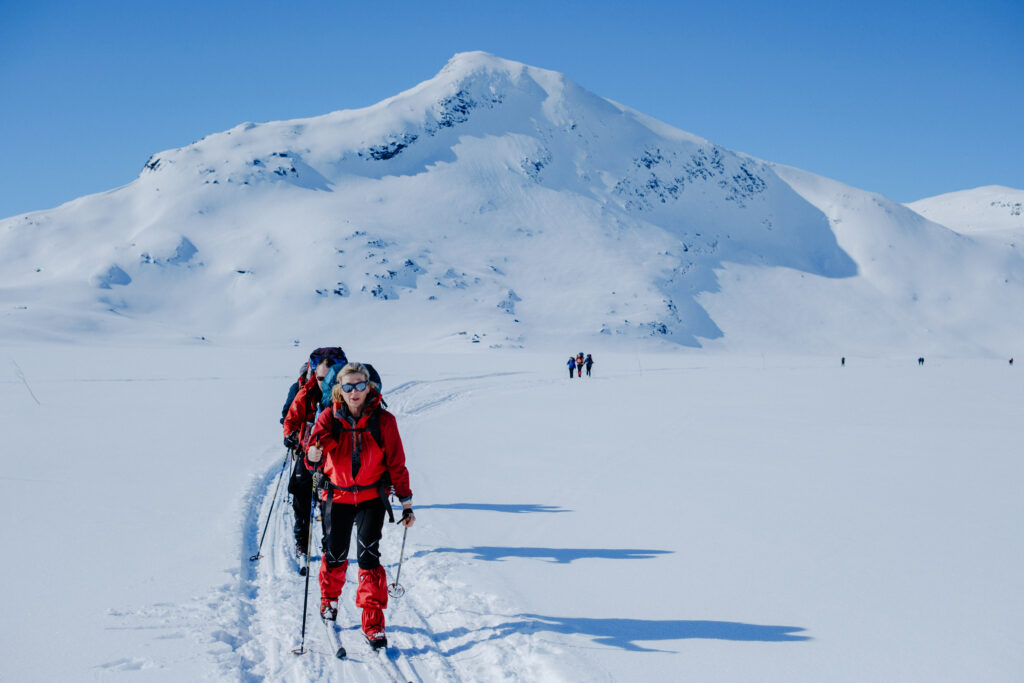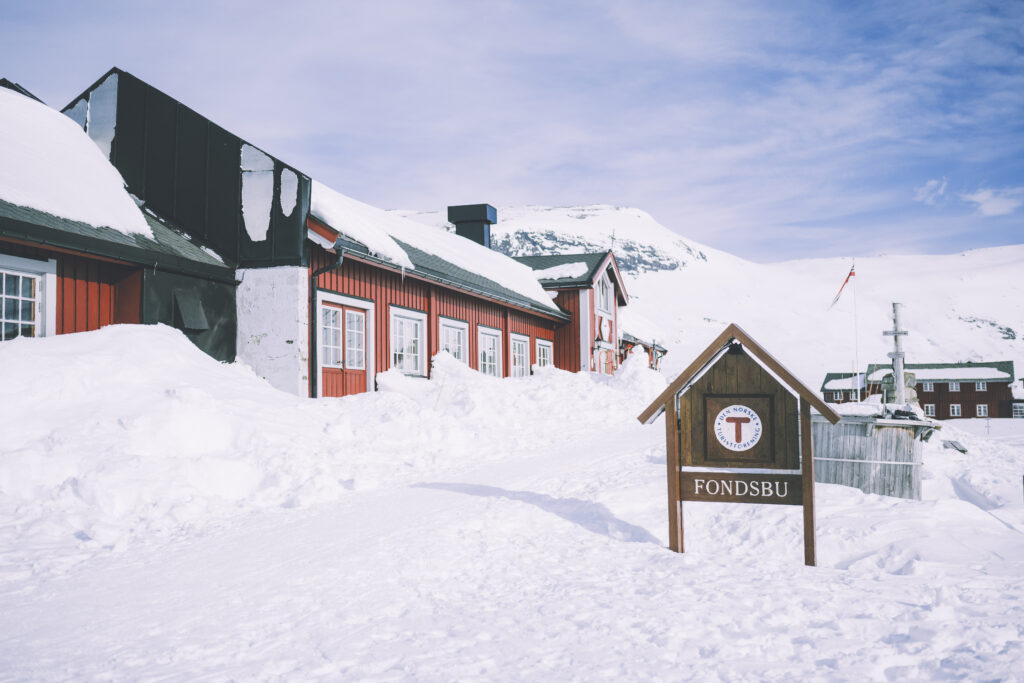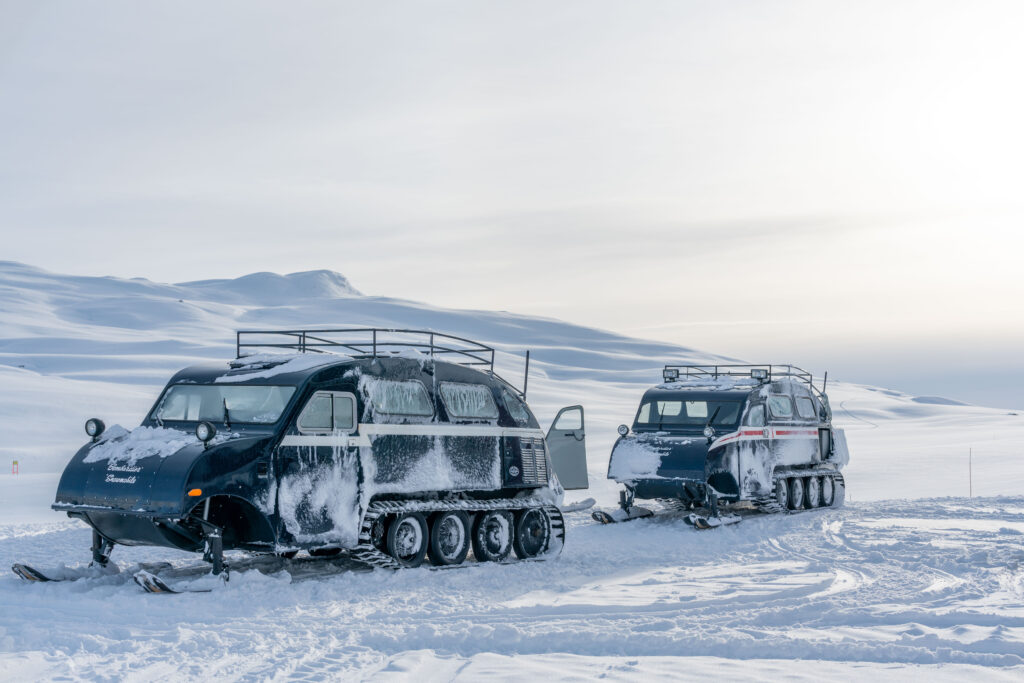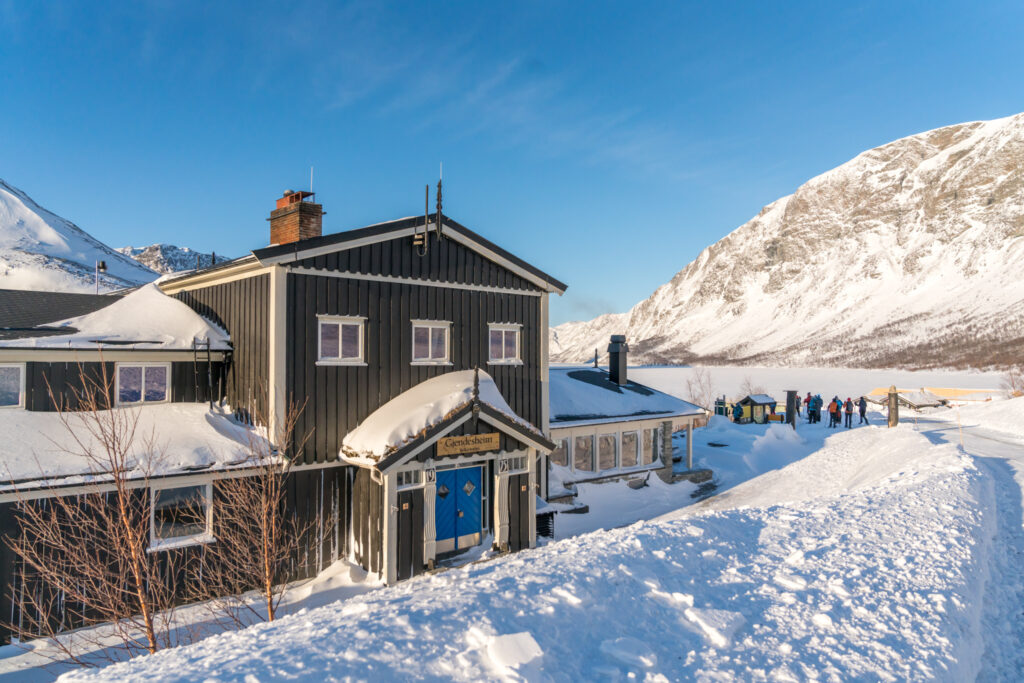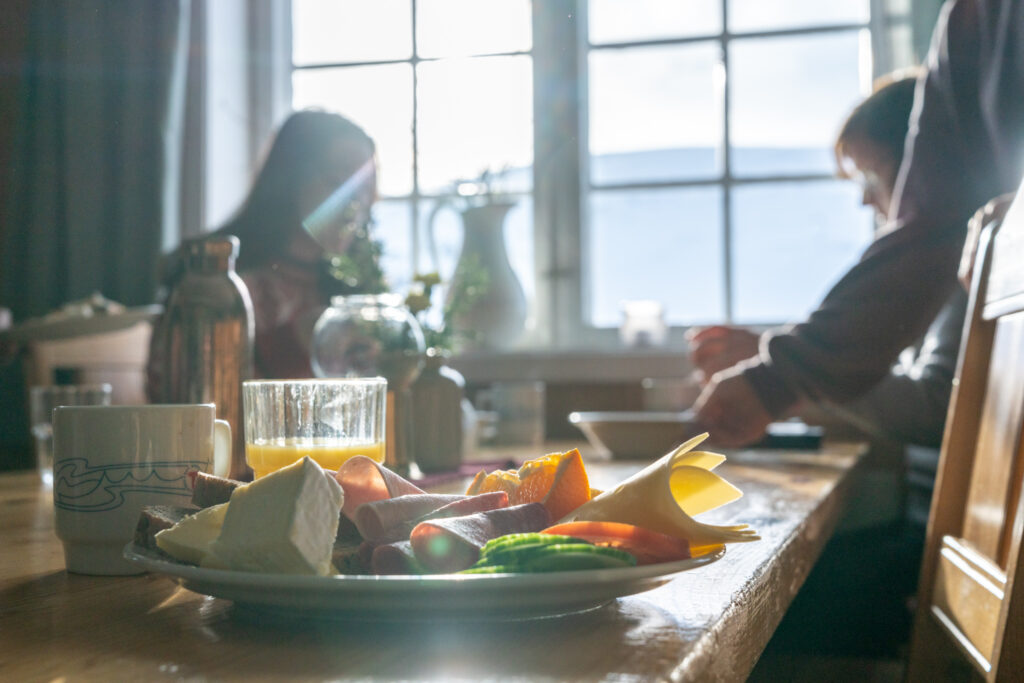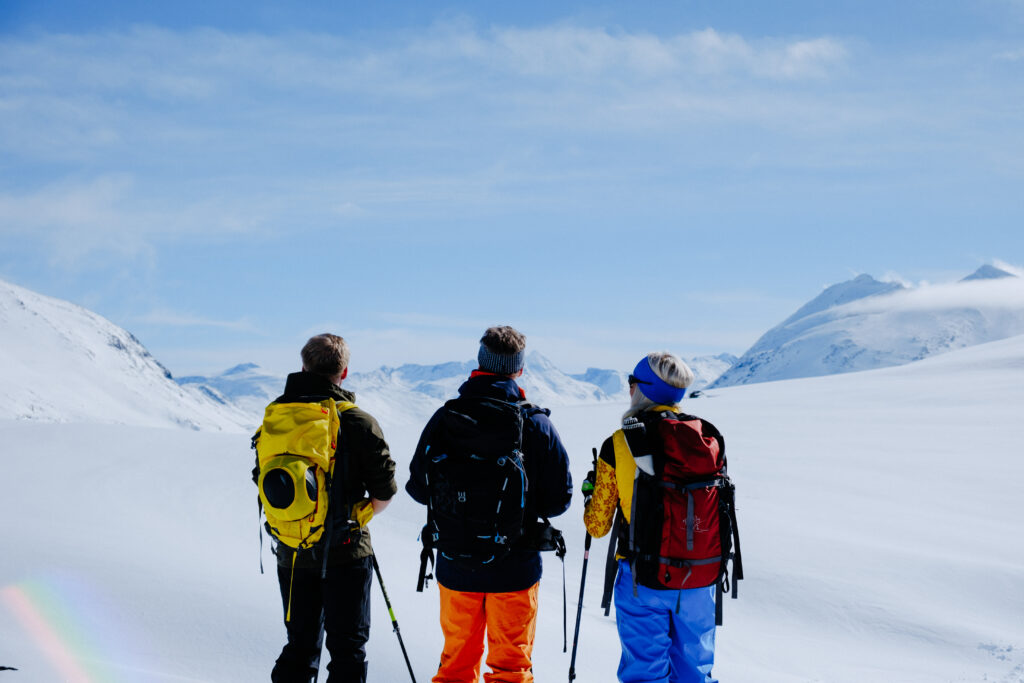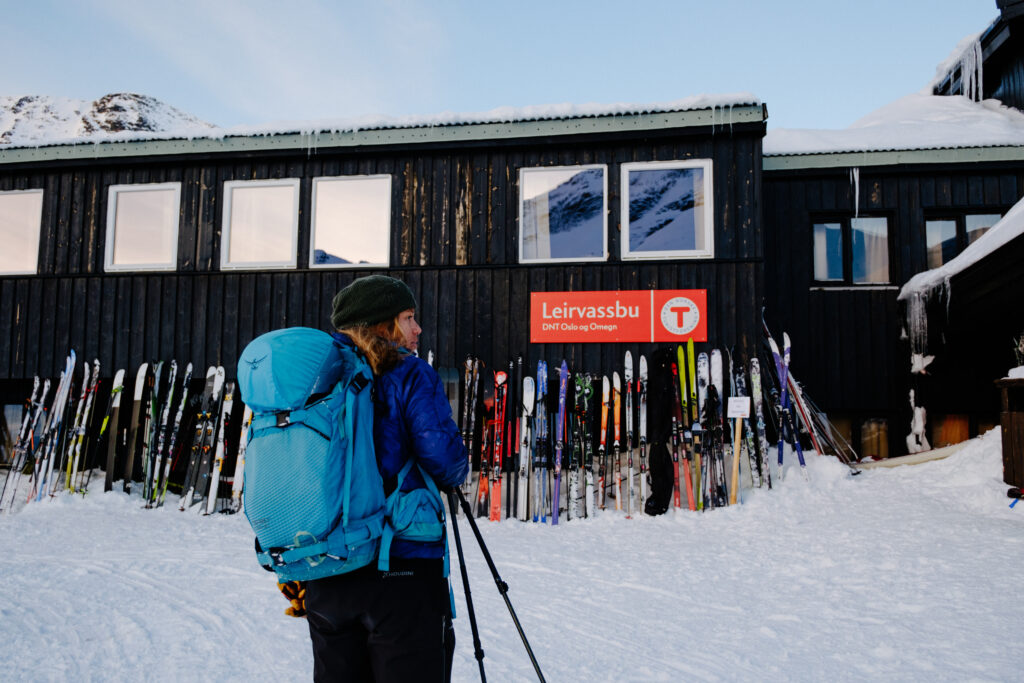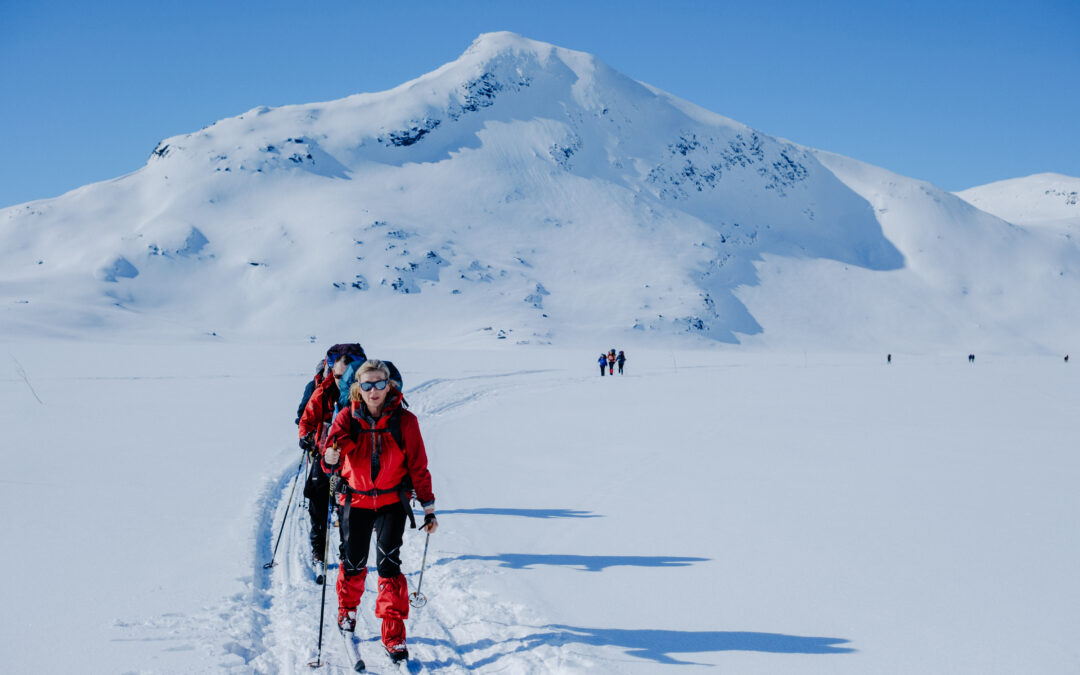The winter in Jotunheimen is here and have you ever wondered how it would be here, embarking on a skitrip in the snow, from lodge to lodge, just you and your skis in this vast landscape?
Being out in Norwegian nature in winter is a different dimension of the so called Friluftsliv, the Norwegian culture of being outdoors at any time in any way. For ages people in Norway have grabbed their skis and enjoy trips in crisp air, crunching snow and the special peace, that only winter can provide when snow is covering the rough landscape around you with its white sheet of silence.
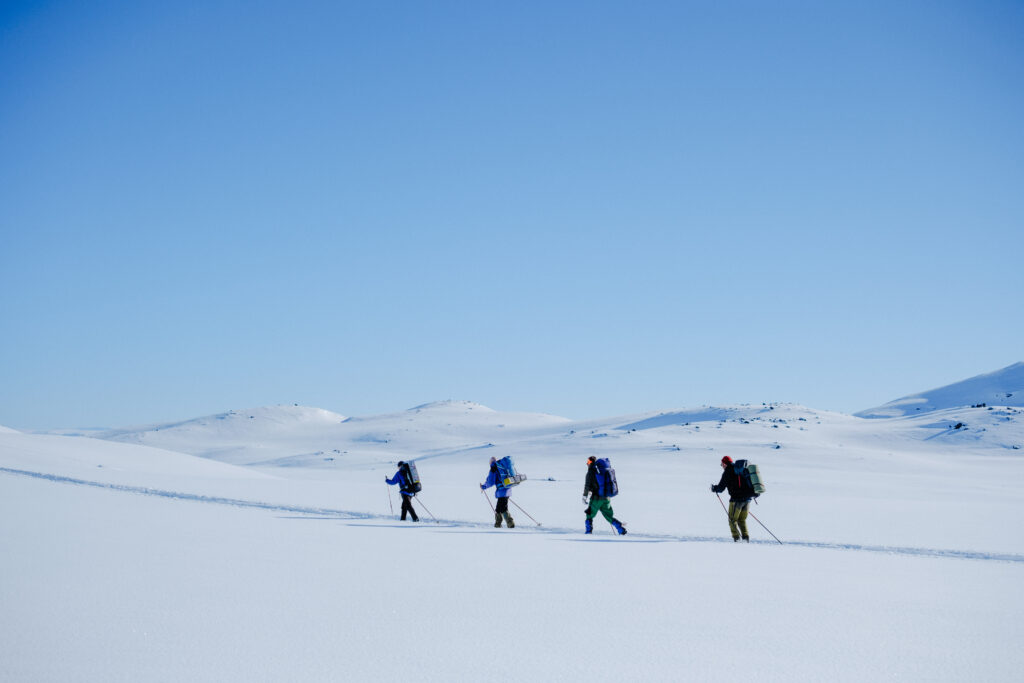
Many people love being outdoors in Norway on treks and hikes in the mountains from lodge to lodge. That is probably the most common way, and since the summer and autumn season is rather short, you will get in touch with at least small snowfields, that are still there from the last winter. And even in summer it can happen that suddenly temperatures are dropping, and snowflakes are dancing around you, giving you a greeting from winter. When checking your hiking map then to check if you are still on track, you will probably recognize the blue winter tracks on the map. How will winter look here? Is it possible to go from lodge to lodge here in this other time of the year? And how would it be to ski over frozen lakes and through high valleys?
Winter in Norway – a new dimension of being outdoors
As mentioned before being out on skis is quite common here in Norway, even when nowadays maybe not every Norwegian is born with skis on their feet like it was in the past. But winter is a big thing here, and it’s often a real winter that lasts for almost half a year at many places, so you must get used to it and to deal with it. And therefore, why not using all these nice cabins and lodges in the mountains also during that time of the year? If you have pictures in mind of the sometimes rough landscape of the Norwegian mountains, you can clearly think, it`s not possible to be out there in winter, no chance!
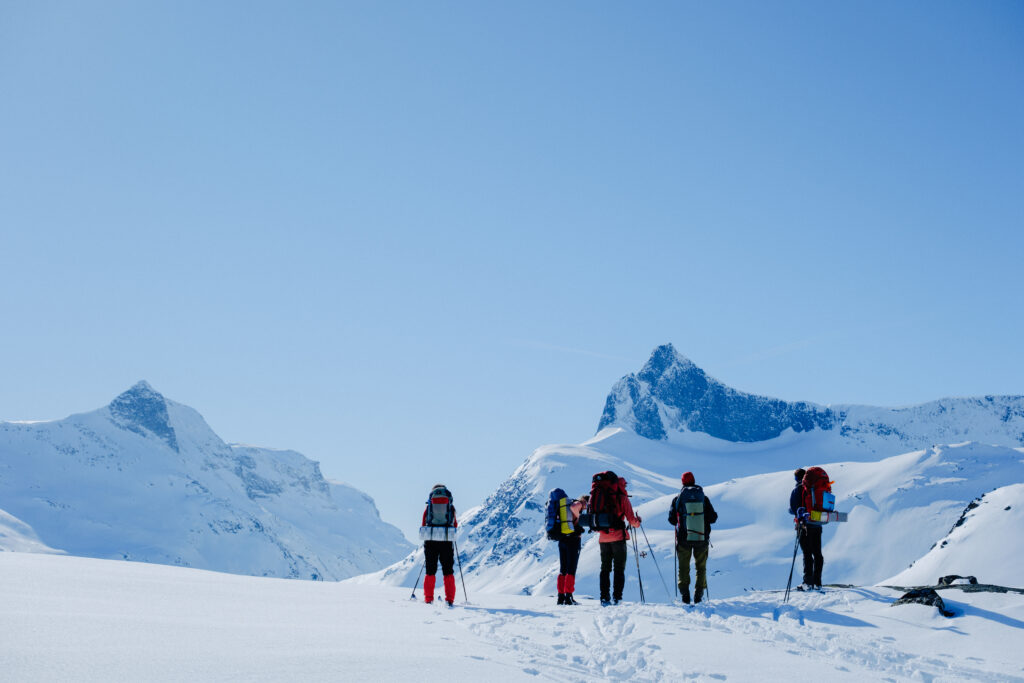
But it is! And its neither rocket science nor only doable for polar heroes like Amundsen or Nansen – it is doable for most of the people that loves to be outdoors!
How to start into winter-touring in Norway
When thinking about taking the step into winter skiing with backcountry skis, the least requirement is to be willing to endure the cold and being out in winterly conditions for a longer period; most likely for 4 to 6 hours while skiing from lodge to lodge. And when arriving at the lodge in the afternoon, warm showers, a cozy atmosphere and great food are waiting for you there to relax and to enjoy the hospitality of a Norwegian mountain lodge.
The contrast of crisp air and cozy lodges in the remotness of the norwegian mountains makes a backcountry skiing trip so special! It is another dimension of being outdoors, doable for almost everyone who is eager to experience winter in the north in the best way! A perfect getaway from hectic everyday-life combined with traditional hospitality and great food!
Simon Michalowicz – Travel Designer and Guide at Jotunheimen Travel
The staffed lodges here in Jotunheimen open from the middle of February to some days after Easter, and this is also the time when the routes between the lodges are marked. So that is the time to do trips like this, and if you are getting closer to Easter, winter will be more and more calm, the deepest and coldest wintertime is behind us. Then it will not be a trip like a polar expedition, but more like an advanced outdoor trip due to warmer temperatures and longer time of daylight. If you are lucky, you will have bright sunshine and calm wind for your trip. Of course, you still need to bring proper winter clothing, but this can relate to normal trekking clothing you bring in let’s say autumn, but completed with some extra liners of woolen underwear, a warm down jacket for the breaks, and some extra gloves, mittens and goggles for harsher conditions.
You do not need to be an advanced skier to embark on a trip like this, it is of course an advantage if you are used to cross-country skiing, but it is not a basic requirement. Backcountry skiing, especially if you take it relaxed, is more like shambling through spectacular landscape without racing or “proper” skiing. So, if you are a little sporty, there are no bigger obstacles to go on your first trip.
The benefits of an experienced partner for your tour
As most people are not having backcountry skis, ski boots and poles in their gear shed this is the most challenging part of going on the first trip. But this leads us to Jotunheimen Travel and the advantage of choosing an experienced tour operator for a first backcountry trip. We can solve this “issue” by providing you with the needed skiing and safety equipment without spending a bigger amount of money in buying this equipment without knowing if this will be a once-in-a-lifetime trip or will lead into more trips. So, a self-guided ski hike from lodge to lodge with marked winter trails in Jotunheimen, together with Jotunheimen Travel, could be a great choice for your initial discovering winter trip in Norway.
Besides this, we can assist you with your first winter experience by joining one of our guided trips. We offer different guided trips for different levels of experience and niveaus. Our experienced guides take you on shorter trips to get a first impression or on longer adventures that will be more demanding. It’s all up to you and your choice. We will help you to take the first step and to discover a totally new dimension of outdoor touring for you in the best possible way!
Five reasons to go on your backcountry skiing trip with us:
- We work hard to offer you a trip that creats great memories
- We adjust the trip according to your needs
- We choose the best possible accomodations for your trips
- We assist you during the whole trip – we are always available for you from the booking to the end of your trip
- We offer you unique trips with an adventurous character in a safe way
